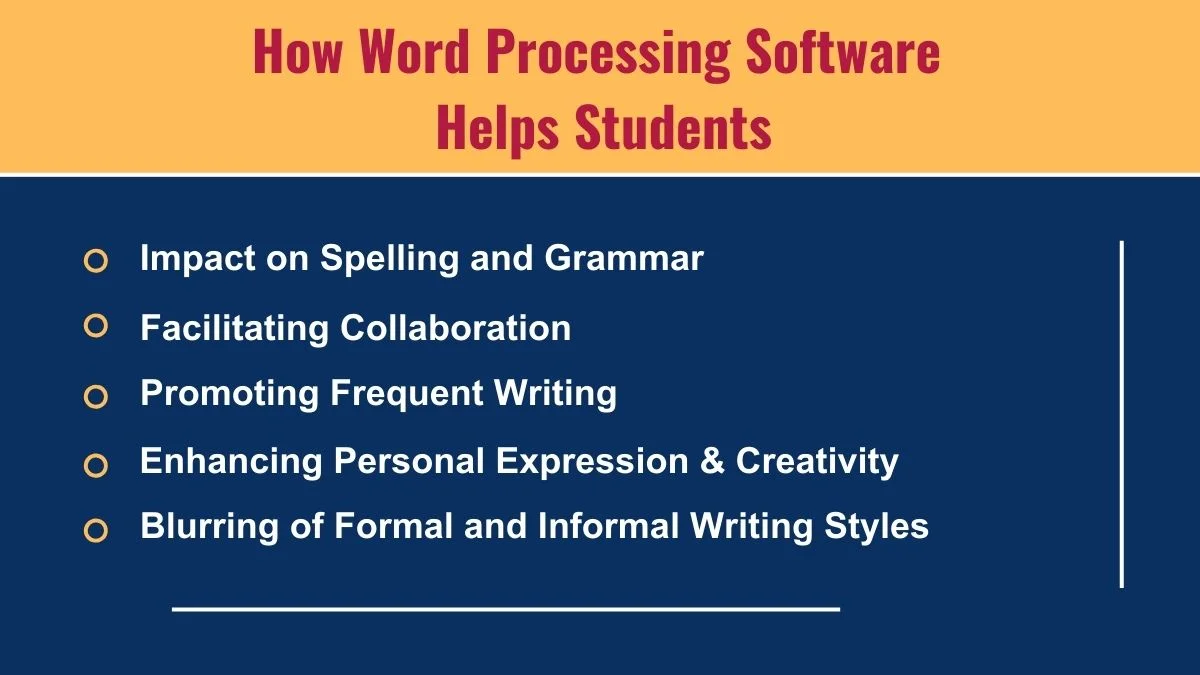In the evolving landscape of education, word processing software has become a critical tool, significantly impacting student writing and learning. A study by the Pew Research Center involving 2,462 Advanced Placement (AP) and National Writing Project (NWP) teachers reveals several ways in which digital technologies, including word processing software, benefit student writing:

1. Enhancing Personal Expression and Creativity
78% of teachers agree that digital technologies encourage student creativity and personal expression. This is reflected in the diverse ways students can present their ideas, from traditional essays to multimedia-rich documents.
2. Facilitating Collaboration
According to 79% of teachers, these tools encourage greater collaboration among students. Word processing software often includes features that allow multiple users to work on a single document simultaneously, fostering a collaborative learning environment.
3. Expanding Audience Reach
A significant 96% of teachers observe that digital tools enable students to share their work with a broader and more varied audience. This exposure is crucial in preparing students for a more interconnected and digital-centric world.
4. Promoting Frequent Writing
The study also indicates that digital technologies encourage students to write more often in various formats. This increased engagement with writing helps improve their skills over time.
However, the study also highlights some challenges associated with the use of digital tools in writing:
5. Blurring of Formal and Informal Writing Styles
Teachers have noted a tendency among students to use informal language in formal writing assignments, signaling a need for clearer distinctions between different writing contexts.
6. Inclination to Take Shortcuts
68% of teachers feel that digital tools make students more likely to take shortcuts and not put enough effort into their writing, which could impact the depth and quality of their work.
7. Impact on Spelling and Grammar
While 40% of teachers believe digital technologies make students more likely to use poor spelling and grammar, an almost equal percentage (38%) think these tools have the opposite effect, improving spelling and grammar.

